Lock Blog
A resource for consumers, locksmiths, and security professionals
A resource for consumers, locksmiths, and security professionals
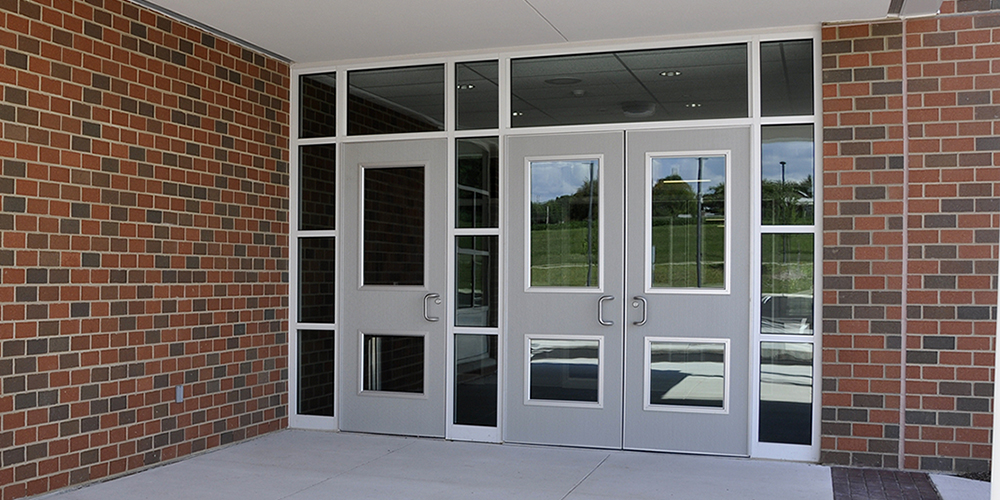
The safety that electronic locks offer extends from the safety of the general public to the safety of private property. These locks are like all electronics and serve a vast range of needs. Everything from residential to the highest of government security have been addressed with electronic locks. All of the best safe manufacturers sell units with electronic locks. And now most cars have some sort of electronic key system. But what are the pitfalls of the technology? Are you, and the things you are trying to protect, safer with electronic locks? Not all of the technologies are the same, and with electronic locks, the keys you use to open them are just as important as the locks themselves. Electronic locks are the ‘choose your own adventure’ of the security world. The parings of unlocking and locking devices will both shape the final outcome of your protection. Personal needs are very important to take into account as well as the shifting landscape of new technology. New methods of electronic based security are always improving, and new products are always being developed. So what is the market like now?
Electronic locks are locked or unlocked with the assistance of an electrical current. The electrical current is either used to power an electromagnet, a solenoid (electromagnet with a single coil), or a motor. These devices will actuate the lock in a manner that is either fail-safe or fail-secure.
A fail-safe lock will open on the side of ingress in the event of a power outage, or in the event of an emergency alarm being pulled. This is possible because the electrical current is used to keep the door locked, and removing power disengages the locking mechanism.
Advantages
Disadvantages
A fail-secure lock is the exact opposite of the fail-safe function. It uses the electrical current to retract the bolt. And in the event of an electrical outage, the bolt will remain in the locked position.
Advantages
Disadvantages
Not all devices can be found in both fail-secure and fail-safe. Most of the time how the device functions will determine whether the loss of electricity will lock or open the door, gate, hatch, etc. For other electronic locks, the building codes may restrict the use of either fail-safe or fail-secure. The main types of electronic locks are:
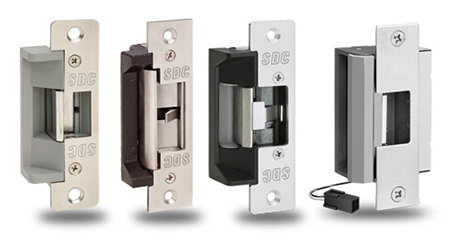
Electric strikes have a spring loaded keeper that manipulates the bolt on the lock. Without the proper tool for entry, the keeper will stay fastened in place. Only with the correct verification with the keeper loosen and allow the bolt to retract. This type of lock can be fail-safe or fail-secure and depending on the building codes for your area and type of structure, you may have no choice in which to install. The device is installed either on the door frame or in the case of double doors, on the stationary door (inactive leaf). Most often this type of strike is made for safely exiting the building, and in most cases will open from the inside even in the case of being fail-secure. This is done with a manual override such as a knob or key. A key can also be fashioned to override the lock from the outside.
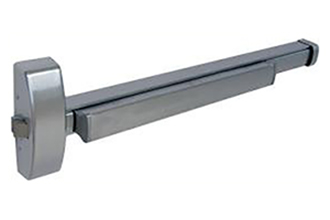
This electronic lock is designed to be uniquely fail-secure. The device has “retraction” in its name to describe that its bolt functions by retracting when electrical current is applied. The bolt will remain retracted until the current is shut off or inhibited. The bolt will stay secure when there is no current, so special precautions must be taken for emergency preparedness. Because this is a high-security device, a separate power supply is needed so that a fire alarm can make these doors open (if this is desired or required).
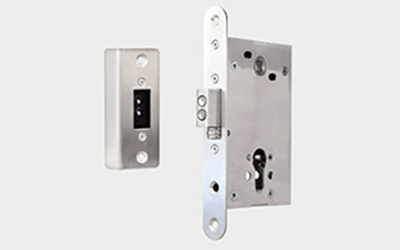
This lock is available with either fail-secure or fail-safe functions. They get their name from their contents and inner workings. A cross section of such a lock will display a latch and gear system that can be manipulated with the use of the lock cylinder and/or an electrical current. In the fail-safe version of this lock, the electric current will cause the bolt in the lock to stay extended. In the result of a power outage the door will be completely unlocked, and in the case of a fire alarm the door can be set up to lose power. The fail-secure version will use the electrical current to retract the bolt and therefore it will remain locked until power is reestablished to the system.
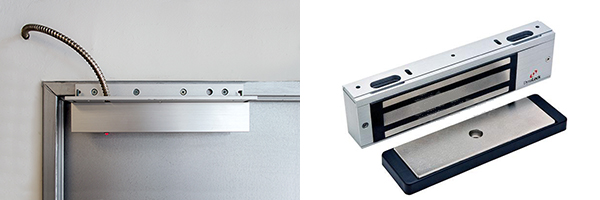
An electromagnetic is one of the most common types of magnetic locks. It uses a magnet that is created when a current is moved through a wire with multiple coils around an iron core, or a solenoid (single coiled wire wrapped around a metal core). When the current is disrupted the metal wire is no longer magnetized. Because of the very nature of an electromagnet, it can not be fail-secure, which means that in the result of an emergency or power outage, the doors will unlock. The built-in feature of unlocking in the result of a power outage (referred to as fail-safe) was the founding idea of the electromagnet. The lock was first made as a commissioned safety feature for the Montreal Forum in Quebec Canada. The issue they were made to solve was the threat of doors being locked in the event of an emergency. The fear was that in the event of a fire, staff would have to go to all the doors and unlock them, or simply leave every door in the building unlocked.
The solution was a door that would unlock with the loss of power, and, furthermore, a series of doors that could be opened by the pulling of a fire alarm. When there is no emergency to disable the locks, the magnets can be manipulated with a key that temporarily interrupts the electrical current. After a few seconds, the current will return, and once the door has closed it will magnetically bind the door to the door frame. This lock set up is constructed by fixing a plate of magnetic metal (usually iron) to the door, and the electromagnet to the door frame. The strength of the magnetic force holding the door closed will depend on how the coil is wound and constructed on the electromagnet; the strength of the current (how much electricity is being used); and the material that the coil is wrapped around.
An electronic lock needs to use an electronic signal to open and close, otherwise, it would always be locked or open. The answer is an electronic key. This is not necessarily a key in the classical sense of the word. These keys can be anything from a code to a retinal scan. The devices all have their strengths and weaknesses, but a similar strength they all share is the ease of giving and denying access. Common electronic entry keys that most people are familiar with include car key fobs and the transponder chips in car keys. With digital keys, there is no need to rekey a lock after a threat to the security has been detected. The key needed can simply be changed universally or for a specific lock.
These are sometimes referred to as tokens because they are a physical device that are required to interact with the lock, much like a bus or arcade token interacts with a machine. These authentication devices can be swipe cards or a digital device that sends out an infrared signal. These locks are defined by the need to have a line of sight between the user and the lock. You must use the device within close proximity of the lock.
Advantages
Disadvantages
An access code is a series of interactions in a specific order, with a keypad of some kind. These types of electronic locking mechanisms are very common on most types of safes. The variations of these codes are endless, which makes them extremely secure against guess based attacks. The codes could be numbers, letters, or even directions. Color coding can even be used so that the code may seem as if it is a numeric code when it is truly a sequence of colors. With the endless ability to get creative, it makes sense that this method suffers from the problem of human error. The code can be seen and copied or simply be forgotten.
Advantages
Disadvantages
A radio-frequency device, or radio-frequency identification device (RFID), is similar to the authentication token. The key difference is that the signal can open the lock from farther away. You do not need a direct line of sight for this device to interact with the electronic lock. It suffers from similar advantages and disadvantages to the token, with the added change of an extended interactive range. This type of technology is used in the August or Kevo and similar smart locks that can be opened with your smartphone (Bluetooth).
Advantages
Disadvantages
Biometric locks are the way that people in movies about spies and the future lock their doors, but this technology has existed for a while now. The new iPhones and the DMV use biometrics in the way of fingerprint scanners, but biometrics are more than just fingerprints. Retinal and iris scans of your eye, facial recognition, and voice print recognition are all examples of biometric readings. The quality of the sensor is going to determine the effectiveness of this type of access. If the biometric sensor is too forgiving then it may not protect you at all. On the flipside of that coin, if the sensor is too discerning a simple ailment may change the feature that is being read enough to keep you locked out. The most important thing is a properly calibrated sensor that allows a slight margin of error.
Advantages
Disadvantages
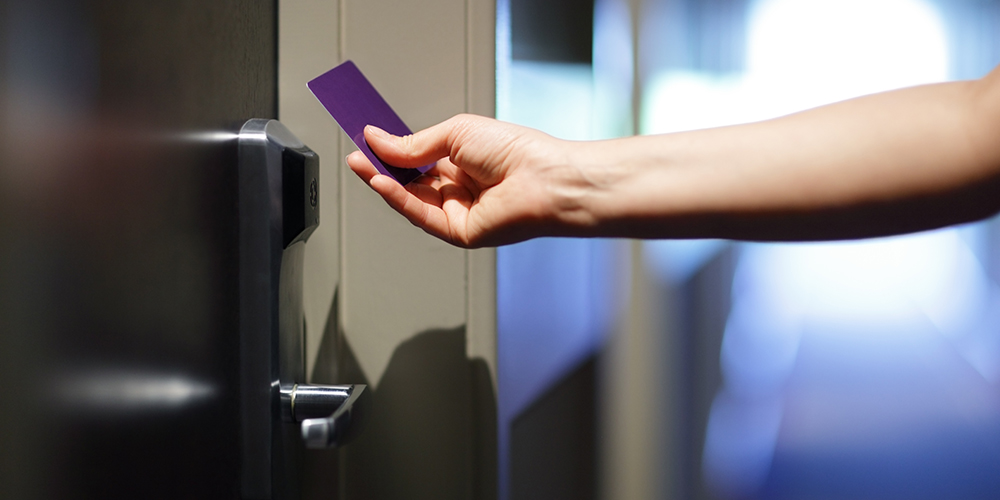
There is a lot to consider when you are examining electronic locks. With this information, you should now be able to discern for yourself what you need. I always stress the importance of practicality and diversity in your security. Implement methods that are going to work for your personal needs, and combine the different locks throughout your home or office. At the root of great security, there must be forethought and planning. Anything you haven’t considered is something for a thief to exploit.
Preparedness is at the root of prevention and protection, especially in the security industry. Electronic locks are a big investment, so they may be suited more for a business than a home, but there is no better personal investment than in protecting your property. Remember to be practical with your solutions, and think not only about how this protects you but how it will affect you and the other people that will use your locks. You may have no problem with having three key codes that circulate after one is used, but this might be hard for others to use. Be practical, be prepared, and be safe.
Category: Commercial, Lock Types, Residential, Safes, Safety & Security